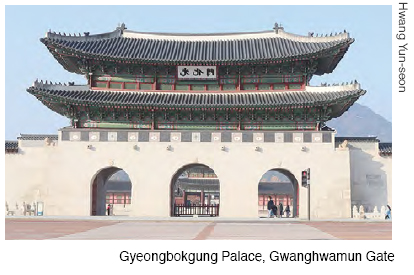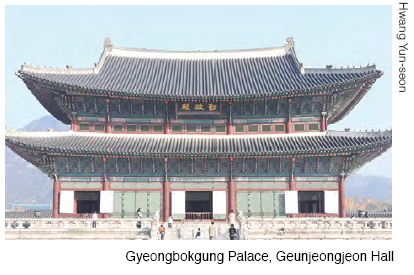Seoul is a “historical city” with many remains because it was the capital of several countries that existed in the Korean Peninsula. Among them, the palaces built in Seoul in the Joseon Dynasty are famous for their picturesque view. Among the palaces built in Seoul in the Joseon Dynasty, four palaces, Gyeongbokgung Palace, Changdeokgung Palace, Changgyeonggung Palace, and Deoksugung Palace, are famous. The UOS Times will introduce the four palaces that have a beautiful atmosphere, especially in autumn.


Gyeongbokgung Palace
Gyeongbokgung Palace is the main royal and representative palace of the Joseon Dynasty. The palace was rebuilt after it was destroyed by the Japanese Invasion of Korea in 1592, in the middle of the Joseon Dynasty period. Gyeongbokgung Palace has four gates, each located in the east, west, north, and south. The four gates are known as the Heunginjimun, Donuimun, Sungnyemun, and Sukjeongmun Gates. These gates and the fortresses connecting them serve as a boundary line between the capital and the outskirts of the erstwhile Joseon territory. Gwanghwamun, the main gate located in front of Gyeongbokgung Palace, has a plaza today, which serves as a major landmark in Seoul.

Changdeokgung Palace
Changdeokgung Palace is located to the eastern side of its predecessor, Gyeongbokgung Palace. However, it was used more as a residence for kings than Gyeongbokgung Palace. Donhwamun Gate, the main gate of Changdeokgung Palace, is the oldest gate among the main gates of the existing palaces. Huwon, the Secret Garden, located in the backyard of Changdeokgung Palace, is the only royal garden in Korea. It is famous for its high value. The Secret Garden is a representative garden of Korea and has a beautiful appearance all year round.

Changgyeonggung Palace
Changgyeonggung Palace complements the Changdeokgung Palace, which is located to the west of the latter, with a fence between them. Changgyeonggung Palace was partially destroyed, and zoos and botanical gardens were built on the demolished portions of its premises. Its name was changed into Changgyeongwon in the Japanese colonial era. Therefore, Changgyeonggung Palace preserves the pain of Japanese colonial rule. Chundangji pond in the palace gained its current shape during the Japanese colonial era.

Deoksugung Palace
Deoksugung Palace is the smallest palace among the four palaces. It officially gained significance in the history of Joseon during the reign of King Gojong, the last king of Joseon. As it was built during the period of modern enlightenment, Eastern and Western-style constructions came together in Deoksugung Palace. The European-style stone building, Seokjojeon, is a representative example. A Western-style garden is built in front of Seokjojeon, and a lake located at its center catches everyone’s eye.
Each of the four major palaces of the Joseon Dynasty has a variety of beautiful elements and characteristics. They are located close to each other in Seoul, which makes it easy to visit all of them. The UOS Times recommends that readers visit the palaces in order to enjoy the beautiful scenery and get to know the history of Joseon.
Hwang Yun-seon
mono071227@uos.ac.kr

